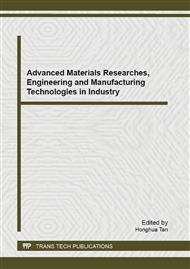p.664
p.669
p.675
p.681
p.687
p.693
p.699
p.704
p.711
Study of Influence of Fans Arrangement to Offshore Platform Noise
Abstract:
Based on Statistical Energy Analysis (SEA), this paper studies the influence of fans arrangement to offshore platform noise, analyses the noise distributions of typical offshore platform areas when the inlet fans are arranged in the Main Engine Room and out of it. On this basis, with the aim of optimal noise in platform, this paper carries out optimal design of the fan arrangement and shows it. The study shows that: the noise influence of inlet and exhaust fans arrangement to Main engine room is relatively small. But it is relatively large to the Public area and the Living area around the Main Engine Room. From the view of platform noise control, the inlet and exhaust fans should be arranged in the Main Engine Room.
Info:
Periodical:
Pages:
687-692
Citation:
Online since:
September 2013
Authors:
Keywords:
Price:
Сopyright:
© 2013 Trans Tech Publications Ltd. All Rights Reserved
Share:
Citation:


